The human body often reacts sharply to overload and stress, especially after 30 years. Feelings of heaviness, sharp pain in the back in the lumbar region are symptoms of stress or signals of serious pathologies, so you should not just ignore them. Why does my back hurt and how to treat it?
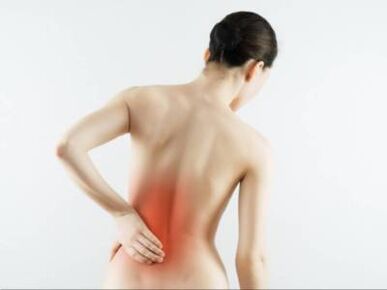
Symptoms
The difficulty of correct diagnosis lies in the fact that many diseases can manifest themselves in this way, and can be a reaction of the body to various external and internal irritants.
Finding out why your back hurts and making the right diagnosis will help to properly analyze the symptoms, which are very diverse.
Where is the waist? This is an area of the back that captures the area from the coccyx to the ribs, which contains many nerve endings and is divided into 2 halves by the spine.
In order to make a correct diagnosis, it is necessary to assess the location of the unpleasant sensations:
- Above the waist, right or left - such a symptom may be an indicator of inflammation of the internal organs: liver (right side) and kidneys (right or left just above the waist). They can also be caused by hepatitis, liver failure, polycystosis, cancer, pyelonephritis. In inflammation of the kidneys, the discomfort may radiate to the abdomen and hypochondrium.
- Below the waist - such symptoms characterize problems with the spine (lumbago, hernia, curvature), menstrual pain and diseases of the genitals in women, intestines, inflammation of the appendix and genitourinary system in men.
Important! Unpleasant sensations in the back can act as a result of inflammation in the body and serious problems.
It is also important to assess the nature of the painful sensations:
- Shooting is a symptom of sciatica. Inflammation of this nervous process in the back causes a burning sensation, shooting or tingling, and their duration and strength may vary. They worsen especially when changing the position of the body, so that a person can often remain in only one position.
- Acute low back pain, most often shooting. In addition, a person experiences a feeling of pulling in the back area and cannot move normally, choosing a comfortable position. Such sensations may be symptoms of: diseases of the lungs and genitourinary system, displacement of the intervertebral discs, renal colic, muscle tension.
- Chronic - permanent discomfort in the back, which disappears briefly after taking painkillers, but then returns again. They show spondylosis, osteomyelitis, tumors and metabolic disorders.
- Painful low back pain - occurs suddenly, but lasts a long time. Mild pain is a symptom of myositis, overexertion or hypothermia of the muscles;
- Displaced - occur in diseases of the colon, pelvic organs, pancreas or tumors.
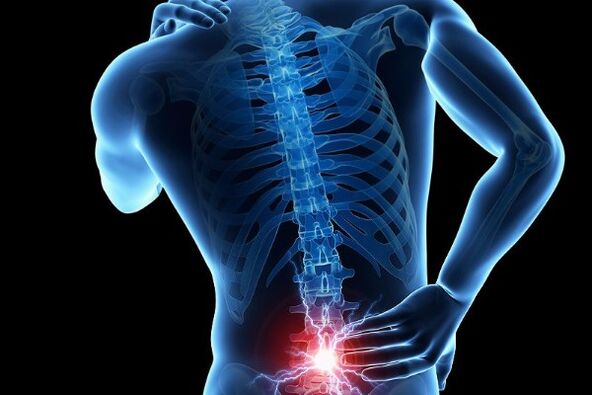
Important! Low back weight is also a symptom of an inflammatory process of internal organs or muscles.
It is urgent to consult a doctor if back pain is localized in one area, is chronic and at the same time tingling and weakness in the extremities.
The reasons
There are several groups of different causes that can cause back pain. They are divided into natural and pathological or acquired.
Natural ones include:
- severe physical activity - due to the accumulation of lactic acid muscle tissue loses elasticity and begins to swell;
- sedentary work - due to lack of movement and as a result of this circulatory disorder appears heaviness in the lower back;
- digestive disorders that can radiate to the back;
- long stay in the cold - low temperature leads to constriction of blood vessels and slows blood flow, which causes discomfort;
- stress - in this phenomenon the muscles of the spine experience spasms, causing a feeling of tightness and discomfort.
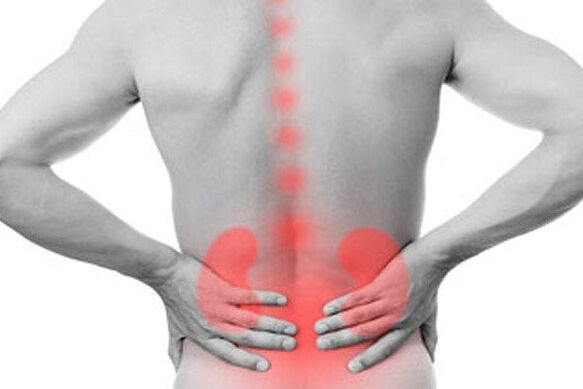
Pathological causes include:
- diseases of the spine - the negative processes in it lead to serious diseases that are accompanied by constant discomfort;
- vascular disease and heart disease - if the cramps are concentrated in the area of the shoulder blades and under them, and are also accompanied by a feeling of pressure, drop in pressure and shortness of breath, then these are symptoms of atherosclerosis and ischemia;
- inflammation of the sciatic nerve - if there is sharp pain in the lower back and a person can be in only one position, most likely this nerve has a cold;
- inflammation of the genitourinary system - nephritis, colpitis, endometritis and other diseases give swelling to the organs and their tissues in the waist area;
- muscle inflammation;
- trauma;
- diseases of the bronchopulmonary system.
Important! Due to the different structure and properties of the body in women and men, back pain in them can be symptoms of completely different processes.
Lower back pain in men may be related to:
- pathologies in the kidneys;
- problems with the reproductive system;
- consequences of trauma.
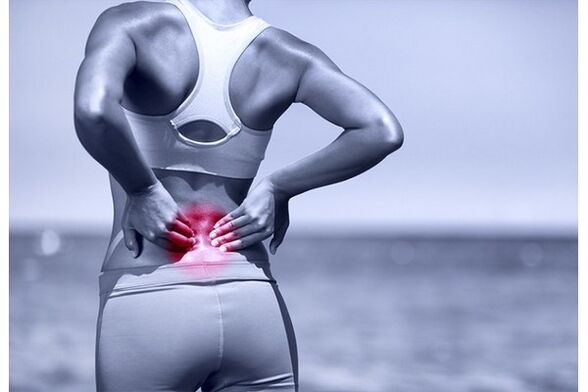
Lower back pain in men over 35 is very common, as they are at risk at this age, so at the slightest symptoms you should contact the clinic. The risk group also includes men who:
- to engage in manual labor;
- lead a sedentary lifestyle;
- are overweight and have bad habits;
- have weak immunity.
Which doctor should I go to in case of problems? First of all, the therapist and he, after receiving the initial data and analysis, will send the patient to an infectious disease specialist, gastroenterologist, cardiologist, urologist, nephrologist, neurologist or proctologist.
Women also often have low back pain, but the reasons for this can be quite different from those of men.
There is no single answer, it could be:
- Premenstrual syndrome or spasms during menstruation - due to delay, hormonal insufficiency, uterine contractions, tension and swelling of the tissues of the genitourinary system, there is tension in the pelvis and back pain in the lumbar region.
- Pregnancy - due to weight gain there is increased pressure on a woman's spine, and this leads to low back tension in women. It should be mentioned that in the early stages, heaviness and pain in the lower back can be a signal of a threat of miscarriage, therefore, when it occurs, consult a doctor immediately;
- After the birth - if before the birth the girl had problems with the spine, then after the birth they do not disappear, but have the feature, on the contrary, to increase due to possible displacement of the spinal discs or their pinching.
- Gynecological diseases - low back pain in women, which accompanies all inflammatory processes in the genitourinary system, occurs regardless of the load. Because of them there is heaviness and painful low back pain. If there is acute low back pain, it is a symptom of ovarian rupture or ectopic pregnancy.
- Problems with internal organs and spine.
The risk group for women includes women who:
- there are infections of the genitourinary system;
- the intestines are unstable;
- there are tumors;
- sedentary work;
- complications after colds;
- physiological changes;
- excessive physical activity;
- increased body weight;
- experience with epidural anesthesia in the past.
In addition to diseases and inflammatory processes in the body, there are a number of provoking factors that cause pain in the lower back:
- hypothermia;
- sedentary lifestyle and infrequent physical activity;
- excessive physical activity;
- professional sports, bodybuilders, bodybuilders, weightlifters must be especially careful.
If you are in one of the risk groups, you should regularly exercise under the supervision of a qualified coach, as well as be monitored by a doctor, taking preventive actions aimed at preventing back problems.
Treatment
If you already have back problems, then preventive action will not help. You should consult a doctor, find out the exact cause and start treatment. You can use the methods of traditional medicine or turn to traditional, but all actions must be agreed with your doctor. Which doctor should I see? To begin with the therapist, and after establishing the causes - to a narrow specialist.
Folk remedies

Traditional medicine involves the use of several methods of control:
- Massage - massaging a stiff back will help relieve tension and swelling. You can do a self-massage or contact a specialist, but only proven, so that it does not aggravate the already existing problems.
- Exercise - regular exercises and warm-ups are performed during the day to relax the muscles and relieve muscle tension.
- Compresses - to relieve swelling of the tissues should be made compresses of cabbage, burdock leaves and plantain. After dressing them and wrapping your back in a warm scarf, you should lie down for half an hour.
Traditional medicine can also be used as a prophylaxis to prevent serious problems. But if the back pain in the lumbar region increases, and massage, compresses and exercises do not bring relief, you should immediately consult a therapist.
Contact a doctor
If the discomfort and pain in the lower back do not disappear, and traditional medicine and massage do not help, how to treat it? First, you need to consult a therapist and find out their cause. For diagnosis, the back is examined in several ways:
- X-rays are taken to check for injuries.
- Ultrasound examinations are performed to rule out diseases and inflammation of the internal organs. For this purpose, MRI with CT can be performed.
- General and biochemical analyzes.
- ECG and gastroscopy are performed to rule out heart disease and gastrointestinal disorders.
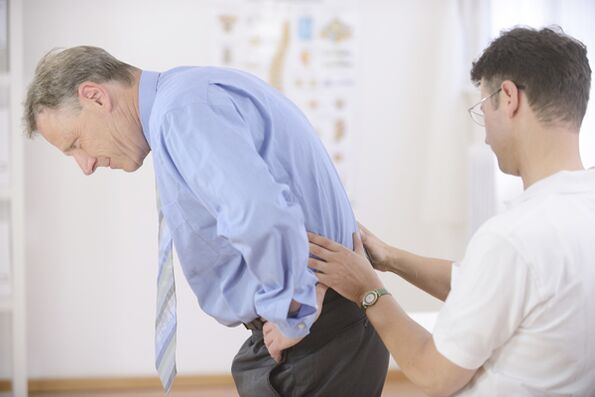
After an accurate diagnosis of the patient, appropriate treatment measures are prescribed:
- problems with the spine, joints and muscles are treated with non-steroidal drugs, courses of therapeutic exercises and massage;
- cardiovascular diseases are treated by limiting physical activity and prescribing appropriate medications;
- diseases of the digestive tract require adherence to a strict diet and courses of drugs enveloping the intestines;
- bronchopulmonary pathologies are treated with antibacterial and antiviral drugs;
- pelvic organ problems - antimicrobials and physiotherapy.
In addition, you need to deal with prevention:
- do not carry weight;
- always keep your back straight;
- sleeps on a firm mattress;
- avoid hypothermia, stress and overeating;
- treat acute diseases in a timely manner.
Back pain is easily prevented through timely prevention: proper lifestyle, regular moderate exercise - all this will help prevent back problems and alleviate existing ones.


















